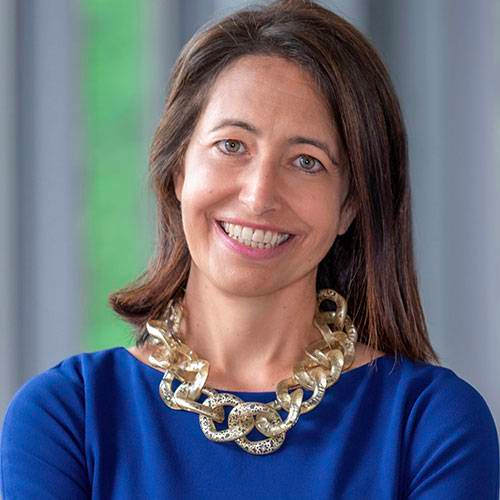
By Hilary L. Link, PhD
President of Allegheny College
Between the end of the 19th century and the first part of the 20th, higher education in this country became more and more specialized and fragmented due to a number of factors: new research findings, the growth of experimental and scientific methods, the application of science to industry, and “an increased awareness of social problems brought about by an increasingly industrial and urban society.” Emblematic of this specialization, which continues today, is the focus on a student’s major, required by almost every college and university. Most majors are too discipline-specific on their own to give graduates the tools to solve the ever-more-vexing problems of today’s complex world. A major in English may present a career path that is traditionally narrow; combine it with a minor in Environmental Science and graduates expand their opportunities, for instance, as researchers in the natural sciences, leaders in the burgeoning alternative energy sector, grant-writers for climate action nonprofits or environment-focused policymakers and communications professionals.
Our problems demand solutions that integrate different perspectives and disciplines, which is precisely why minors matter today more than ever before.
As an interdisciplinary scholar of Renaissance art and literature, I have been trained — like the artists, scientists and humanists I study — to see the world through multiple lenses, to approach complex issues from different angles. Today’s Gen Z students (those born in the mid- and late-1990s and early 2000s) have certain unique characteristics and are facing challenges unique to their generation, which became even more apparent during the past 20 months. These overlapping health, social justice, financial, environmental and political crises do not exist in silos: they demand transdisciplinary, analytical and critical skills. Gen Z, like the Renaissance thinkers before them, are challenged daily to push the boundaries of what we know and what we must achieve.
These overlapping health, social justice, financial, environmental and political crises do not exist in silos: they demand transdisciplinary, analytical and critical skills. Gen Z, like the Renaissance thinkers before them, are challenged daily to push the boundaries of what we know and what we must achieve.
This kind of Renaissance thinking is at the heart of the multi-pronged education offered at Allegheny College, where every student is required to select a second major or a minor in a different division entirely. Our learners develop the skills they need to see things from many different perspectives, while leveraging their abilities and individual passions to create their own particular paths to success.
A curriculum like Allegheny College’s offers students the best preparation for the uncertain and complex world they will encounter after graduation. The science and investigative reporter, author and “renaissance man” David Epstein shares a glimpse of this by stating, “Everyone needs habits of mind that allow them to dance across disciplines”.
While Allegheny College’s current curricular approach feels like a contemporary response to our complex world and the needs and desires of today’s students, documented comments from faculty discussions in the mid-1990s showcase a remarkably forward-facing approach to how the College has always approached education, that mirror Epstein’s words: “an Allegheny College education should provide opportunities for students to integrate material across traditional disciplinary boundaries”; and “it is hard…to imagine a challenging job outside of academia that does not require integration of knowledge across disciplines, yet our coursework rarely prepares us for this kind of task.” Allegheny College implemented the major-minor requirement in Fall 1996, after several years of discussion about revisions to the more prescriptive curriculum in place at the time. These discussions followed the College’s move from a trimester to a semester system and were initiated by the faculty Curriculum Committee and then approved by the full faculty.
Digital Natives Seeking Intellectual Growth
Gen Z is on track to be the best educated generation yet; additionally, they are the first generation of digital natives who have only known a world in which every fact is at their fingertips. To make a greater impact, given the facility with which they can access information, institutions of higher learning have an obligation to focus on our students’ intellectual, moral and individual growth. As leaders in higher education, we must put aside the more rigid, discipline-specific and vocational nature of education — even though it is the manner in which most of us were trained — and prepare the next generation to solve complex issues using multidisciplinary tools like intersecting majors and minors. Today, the vast majority of higher education institutions allow and encourage, but do not require, a minor. Allegheny College is currently one of the only colleges in the country requiring a major and minor to graduate, offering at least 999 combinations of majors and minors to date. But our approach goes beyond a required pairing; it is the intellectual framing, emphasis on research and interdisciplinarity, and academic rigor of our courses that push students to find intersections and interconnectivity between their two chosen areas of study. “A minor …connects you to another discipline and changes, expands how you think about disciplines…but also, it expands how you think about life, people, working with people, creativity and how creativity can manifest itself differently,” notes Dr. Micah Sadigh, professor of psychology at Cedar Crest College, a private liberal arts women’s college in Allentown, Pennsylvania. At Allegheny College, we believe the learner’s perspective on the world around them changes and understanding of each discipline is enhanced by knowledge of the other, spurring both intellectual and personal growth. In this way, the interconnectivity of the major-minor recalls the Renaissance, a period in which links between art and science both transformed and revolutionized how we still see the world today.
A Changing Career Landscape
Recently the U.S. Bureau of Labor Statistics stated that the average college graduate can expect to have more than 11 distinct jobs before the age of 50, many of which don’t yet exist. Therefore, Gen Z’s desire for a multi-pronged approach to learning is not merely an intellectual exercise, but rather a necessary tool to prepare them for the fast-evolving workforce they will enter. Connecting different disciplines, embracing the agility and expansiveness of thinking that comes from toggling between areas of knowledge, are all tools Gen Z will need for their future work lives. An interconnected curriculum further prepares Gen Z students for their uncertain and fast-paced futures by leading them beyond the classroom or the textbook, inspiring them to deepen their knowledge out in the field, while researching and learning to collaborate and build relationships.
Gen Z students have high expectations for their institutions of higher learning, and they remain skeptical about the value of a four-year degree. They fully expect (even demand) their institution to prepare them to be the nimble workers employers will continue to seek in the future — ones who can pivot, integrate new ideas, collaborate widely and see big issues from many different viewpoints. They want immersive experiences, opportunities to collaborate across an institution, and a space to find and be their authentic self. Yet the traditional focus on one major or one area of study runs counter to all that. An education requiring a major and minor from two different, contrasting disciplines specifically meets the needs of these students to sharpen their minds, deepen their talents, learn collaboratively and express their individuality.
Diversity, Complexity, Uncertainty
Gen Z has grown up confronting complex global challenges and uncertainty, and their faith in their future has been shaken by recent global crises. They are the most diverse generation yet, faced with ever-more intractable and interconnected issues. Pursuing a minor in addition to a major can help students develop an ability to hold, consider and interpret multiple truths at once.
Beyond preparing them for a changing career environment, an intersecting minor prepares Gen Z to be agile, open-minded, diverse citizens of the future. At Allegheny College, we meet the self-view of Gen-Zers — multidisciplinary learners and people who embody a modern Renaissance perspective. They want to be lots of different things, and we are preparing them to make their own futures and solve the problems they care about in a broader context. To showcase just a few of hundreds of examples, current Allegheny College students have selected the following combinations to fulfill their multi-pronged interests: Biology and Classical Studies; Biochemistry and Arabic; Neuroscience and Black Studies; History and Computer Science.
The desire to pull together seemingly disparate interests has long been a foundation of an Allegheny College education, even before the major-minor requirement was implemented. Physics major Ben Burtt had a minor in theatre, which he took to Hollywood, becoming a successful sound designer, film editor, director, screenwriter and voice actor. As a sound designer – a role he created in the industry — his credits include the Star Wars and Indiana Jones film series, Invasion of the Body Snatchers (1978), E.T. the Extra-Terrestrial (1982), WALL-E (2008) and Star Trek (2009).
If the past year has taught us anything, it is that we must do a better job of seeing things through others’ perspectives, in order to make change that matters. Our world is becoming ever more polarized through political intransigence, starkly opposed arguments on climate change, and efforts to address racial and social injustice at all levels. By training students to see the world through two different disciplines — a major and a minor — we are training them to see the world through the eyes and experiences of others around them. Gen Z embodies diversity — of race, ethnicity, religion, and more; of opinions, of passions, and of ideas. They embrace differences and learning to connect different disciplines gives them additional personal and intellectual tools to do so, whether globally or locally.
Minors Matter: “Why be just one thing?”
Never before has there been such a need for the coming together of science, art, technology and social science in higher education. A cross-disciplinary education that, for example, integrates climate, engineering and mathematics instruction with social sciences, arts and humanities is only a beginning. Social attitudes are changing just as fast as the culture that surrounds us, which will require flexible, creative and empathetic thinking in personal lives as well as the workplace. Focusing on one subject, one way of thinking, while necessary at the turn of the 20th century, now feels outdated and too restrictive. To help Gen Z succeed, it would benefit educational leaders to take inspiration from the Renaissance thinkers’ thirst for knowledge, guided by experience and experimentation. A degree that requires both a major and a minor nurtures global citizens who can contribute with more impact to the world around them.
Works Cited
Corrigan, Paul T. “Preparing Students for What We Can’t Prepare Them For.” Teaching & Learning in Higher Ed., Blog Post., 23 Dec. 2013.
Epstein, David. Range: Why Generalists Triumph in a Specialized World, Riverhead Books, 2019.
Goldin, Claudia and Katz, Lawrence F. “The Shaping of Higher Education: The Formative Years in the United States, 1890 to 1940.” Journal of Economic Perspectives, 13. 1. Winter 1999 (37–62)
Parker, Kim, and Ruth Igielnik. “What We Know about Gen Z so Far.” Pew Research Center’s Social & Demographic Trends Project, Pew Research Center, 14 July 2021.
 Hilary L. Link, Ph.D., is the first female President of Allegheny College — one of the nation’s oldest and most innovative colleges where multidisciplinary learning breaks the conventional mold. She is a recognized leader, scholar of Italian Language and Literature, and globalist. In more than 20 years of experience across a broad range of institutions, she’s provided students with a cross-disciplinary path to think critically and communicate creatively.
Hilary L. Link, Ph.D., is the first female President of Allegheny College — one of the nation’s oldest and most innovative colleges where multidisciplinary learning breaks the conventional mold. She is a recognized leader, scholar of Italian Language and Literature, and globalist. In more than 20 years of experience across a broad range of institutions, she’s provided students with a cross-disciplinary path to think critically and communicate creatively.

